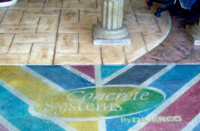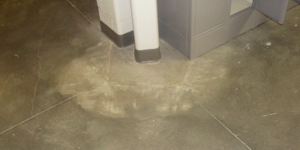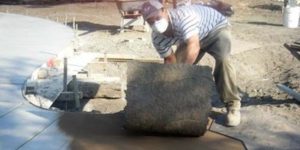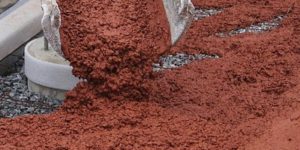I was once a much younger concretist, really impetuous and passionate. I was working for L.M. Scofield Co., and as my wife told me, I worked way too much. So she left me. To be more accurate, she left me in charge of the kids for 10 days while she and her best girlfriend toured a bit of England and Scotland. We’d all get a well-deserved break from routine. I’d get a break from work, while our daughters, Kirsten and Karley, would get a break from Mom, with me. Kind of.
You see, it’s hard for me to take a break. Not so hard to take a break from work. Much harder to take a break from concrete.
I’d earned the vacation from Scofield and the industry, and I was looking forward to hanging out with the girls. But my wheels are always turning, same then as now. My mind and hands don’t rest easily.
I dropped my wife, Neen, and her friend Carrie at the airport. With little Karley in the back in her car seat, I picked Kirsten up from kindergarten and headed to the local building supply stores. I was looking forward to hanging with the girls, while at the same time, surprising Neen by transforming our modest Benicia, Calif., condo. I was going to strip the carpet off the slab-on-grade first floor of our two-story home and go to work. What could be better than for Kirsten and Karley to bond with Dad while learning about what he does through a couple of weekends of stripping, saw-cutting and staining? A real character-builder! A real lesson! A golden opportunity!

This sounds like it was a pretty simple job, but not really. For those of you who have never tackled replacing carpet with patina stain, take heed. Veterans out there know what I’m talking about.
I mentioned that there was saw-cutting. Intricate. And there were lots of color separations at these joints. But neither of these things was what made the job difficult. Rather, it was the prep — removing the carpet, pad and tack strips. Then, filling the spalled nail holes with anchoring cement. Then, removing the residual carpet adhesive, which I accomplished by applying Jasco water-rinseable paint stripper over the entire floor at one time. I had a broad scraper in my hands (kind of like a hockey stick) and would push off one wall while sliding with the scraper across the floor. This was a lot like skating on goose poop over ice. I fell more than once. That Jasco stuff really burns. It does a reasonable job on paints and adhesives, but I can’t recommend it on skin.
Anyway, the job turned out great. Neen made it safely home, was surprised, and, lucky for me, quite happy with the result. I did get in a bit of trouble though, as the busybody gal-next-door commented to her on how Kirsten and Karley had seemingly spent an inordinate amount of time alone at the neighborhood park in the previous week or so.
The stain job was one helluva lot of work, a lot more than either the girls or I had planned on or bargained for. The process wasn’t that quick or simple. However, it was a simple stain job, in that it was patina stain only, stain over gray concrete.

Flash forward to December 2010. We’re in the middle of a complex (mixed-media) job. It’s residential, and remedial, and a tough one. The homeowner had contracted an inexperienced grind and polish guy to transform 6,000 square feet of post-tensioned slab-on-grade gray concrete into white terrazzo, which to his credit he had busted his butt on, but he was just unable to do. Enter the concretist. We’re now shotblasting and regrinding, patina staining, dyeing/tinting and sealing/finishing, in order to correct his work. We’re no longer producing a white terrazzo, but rather, more of a stylized light beige travertine, with much nuance and subtle variegation.
Rarely today is a stain job just a simple stain job.
So often now, we work in mixed media. Stain over gray concrete. Stain over white concrete. Stain under dye. Stain over integrally colored concrete. Stain over color hardener. Stain under tint. Or stain over overlays. This is especially true of me and my concretist group, who are working in themed graphic or art-oriented environments. On any given job, we’re likely to have melded a combination of these to have achieve a desired result.
And that’s not to mention stains and dyes over exposed stone, glass or metals, which may have been incorporated into the concrete for additional effect.
We not only mix it up like this in commercial work, but also, and often, in residential work as well, including in our own studios and residences.
www.theconcretist.com















